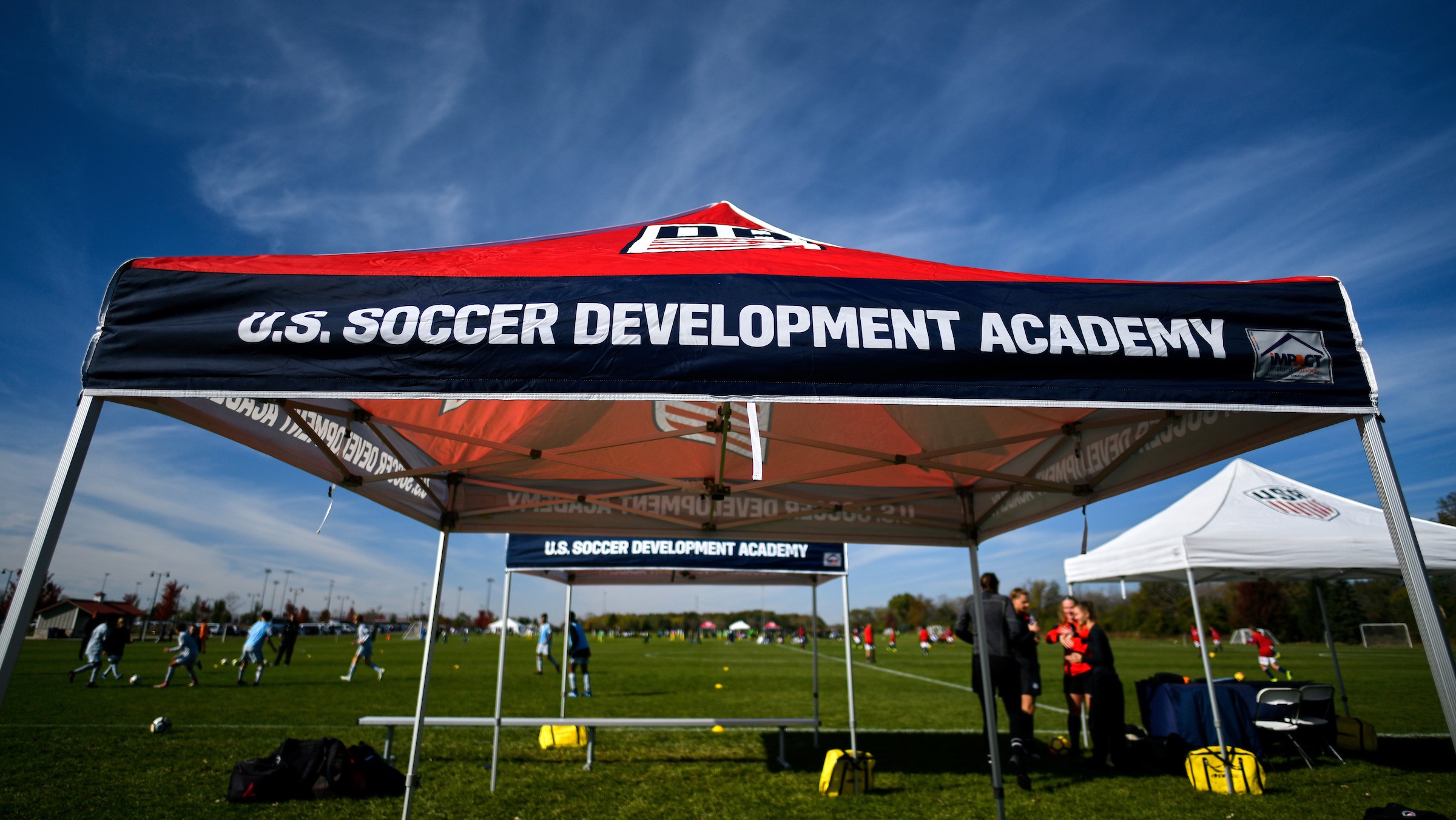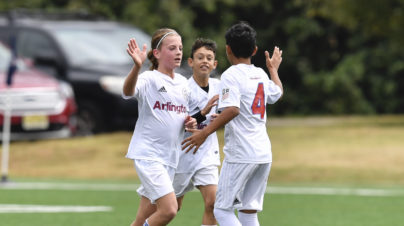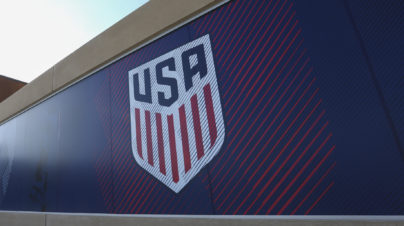Should Development Academy players be allowed to play High School soccer?

Should U.S. Soccer get rid of its ban on high school soccer participation for Development Academy players?
Is the mandate too rigid, causing players to miss out on a valuable experience? Or would it simply be too much of an injury risk, and too low quality that it would even be a waste of time and energy for the country’s most promising young prospects?
On Episode 3 of The SoccerWire Podcast, we discuss the pros and cons of U.S. Soccer’s ban on high school soccer for Boys and Girls Development Academy players.
Host Marc Serber (@SoccerSerber) and SoccerWire editor Charles Boehm (@cboehm) break down both sides of the case, for and against the idea of allowing DA players to also represent their high school soccer teams.
Listen to the clip below to hear the full conversation, or continue reading for a snippet of what’s discussed on the show between Serber and Boehm.
Should Development Academy players be allowed to play High School soccer?We discuss on Episode 3 of The SoccerWire Podcast! Download the full episode: ? http://bit.ly/2Bo0pFM
Publicado por Soccer Wire en Jueves, 17 de octubre de 2019
Serber presented several key aspects of the argument supporting U.S. Soccer’s restriction high school participation for DA players:
“I do think that high school soccer is very important, and it still serves a very important role in this country. But at the same time, if you want to be a professional; if you want to be a National Team player, or even just a college player, the DA is 100-times better than high school in terms of development. You get better training, better resources, better facilities, and you’re learning how to play in a professional environment.
I understand that in the Development Academy there are times where a team will win 7-0, and it’s not that meaningful competition that everybody talks about, but the bottom line is it’s still two teams going through the process, trying to play the right way.
When I played high school soccer in my glory days – which I now realize I wasn’t that good even back then – but when I played high school soccer, we would go up against teams where we were more worried about getting out alive than we were about winning the game. We were going against teams that you knew had no formal coaching, who were often football rejects who still wanted to play a sport, be athletic and macho, and they wanted to hit someone.
These games were not worth the cost. They were not helpful to your development. To the argument that you’re missing out on a great experience by playing high school: of course you are. Anybody who’s played high school soccer has said those are some of the best times, playing with some of their best friends. But if you want to be a top player, if you want to be on the National Team, you have to make sacrifices. Missing high school soccer is just one of many sacrifices.”
Boehm took the conversation in a different direction, taking aim at U.S. Soccer’s decision to set up more restrictions and regulations for youth players, rather than helping to break down existing barriers, and allow for a wider range of individual paths to the elite ranks:
“We’re limiting the options for millions of kids. To me, a successful player development system makes as many pathways forward toward the next level as possible, for as many kids as possible. We already have an enormous issue rumbling under the surface for elite girls about whether the National Team scouts are pointedly refusing to scout one national league that’s not U.S. Soccer sponsored, in order to build up the appeal of the national league that is U.S. Soccer sponsored.
We have these incredible, sorry, pissing contests, over geography and infrastructure and authority, and so now we’re going to intensify this even further.
Mark, you make a good point, but what about kids that don’t fit into that mold? What about kids who don’t have the same choices as the ideal DA kids? I don’t think that we’re recognizing the unknown potential of what’s out there. The kids for whom high school soccer may be their only option – Who’s looking at them? Who’s deciding that they’re not good enough?
It’s easy to find a high school game where there’s crap soccer being played, where there’s crap coaching, where players are being physically run into the ground. Look deeper. That’s the easy thing to notice. What about all the kids that are balling, that are showing potential? How are we making the game more accessible to them?
It’s a 10-year-old debate about high school vs. DA, and I don’t think we’re advancing the larger interests of the American soccer developmental pathway.
My greatest frustration with the DA in general, is that this is U.S. Soccer’s top-down attempt to cure a bunch of developmental problems. In the process they put up more gates, rather than solving with pragmatism the intervention of a neutral referee, they become just another player in this chaotic game.
Why aren’t we breaking down walls and barriers, and opening doors? It’s one door after another, whether you want to play professionally or just maximize your potential as best you can, as a kid.
I think the question is, what are the other options for people who are in a different reality than the one that the DA has laid out in mind?”
———-
Listen to the full conversation between Serber and Boehm on Episode 3 of The SoccerWire Podcast.

















